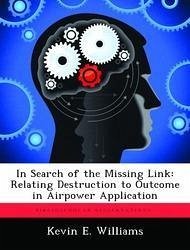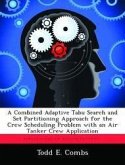Targeting has been the central problem of air strategy since the dawn of modern airpower. One of the most difficult challenges for airpower strategists has been how to relate the physical or functional destruction of targets to attainment of political and military objectives. This paper examines the fundamental problem of relating destruction inflicted on a target system to the desired outcome and presents the Destruction-Outcome Linkage Model to serve as a framework for analysis of past air campaigns. This model links destruction of the ¿pieces¿ of a target system to the desired outcome. Using the Destruction-Outcome Linkage Model as a framework for analysis, this paper traces how airpower strategists have conceptualized the linkage, applied it to past air campaigns and the extent to which their conception was accurate based on the results achieved. The goal is to determine how effectively air strategists have linked destruction to outcome and draw conclusions about the Air Force¿s ability to make such linkages in the future. To sufficiently narrow the scope of the paper, a single target system will be used to illustrate this analysis -- the transportation system.








